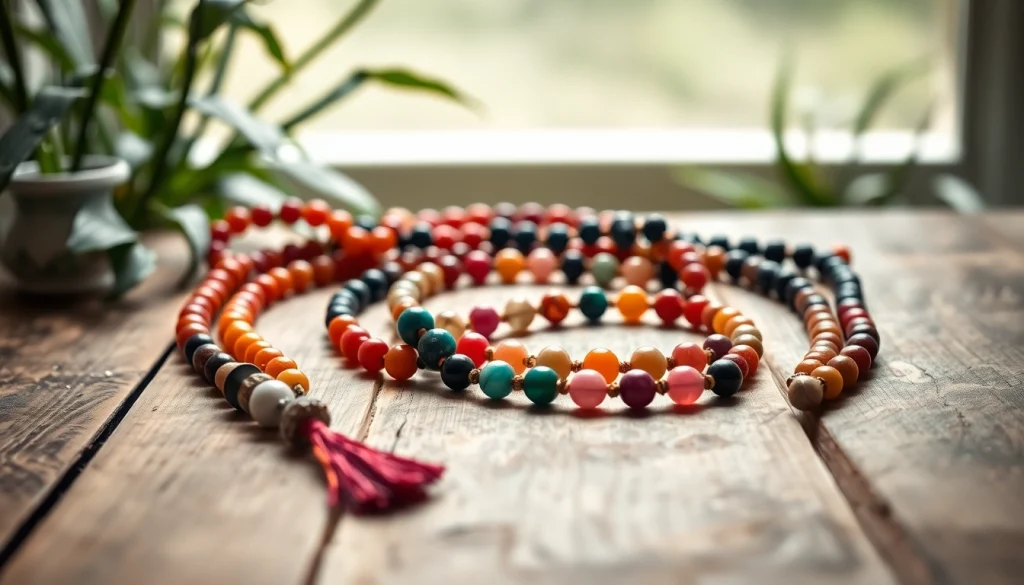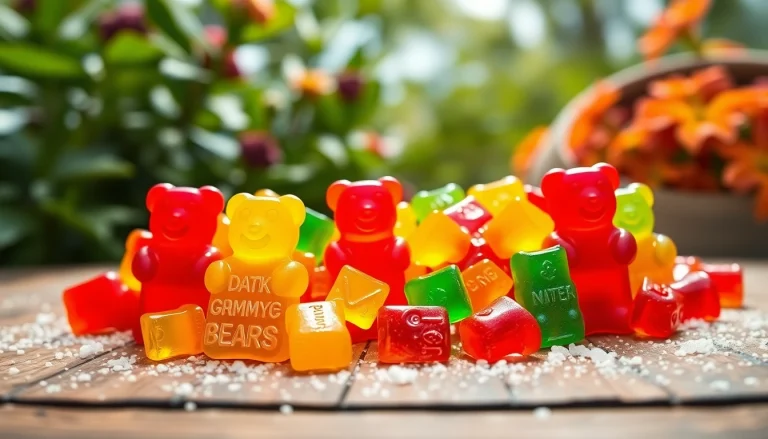
Introduction to Malas
Malas, or prayer beads, have a deep historical and cultural significance, particularly in various spiritual and meditative practices. Respected as tools for focusing the mind, malas are crafted with intention and care, reflecting a deep respect for tradition and mindfulness. In today’s world, the popularity of malas has surged, not just as spiritual aids but also as beautiful accessories. By exploring the origins, uses, and types of malas, one can appreciate their value beyond mere adornment. This article aims to delve deeply into malas, highlighting their meaning, function, and the intricacies behind their structure and spiritual importance. For those interested in discovering more about these handcrafted treasures, a variety of malas await your exploration.
What are Malas?
Originating from the Sanskrit word for “garland,” malas are traditionally strings of beads, often comprising 108 beads plus a larger “guru” bead. These beads serve as counters for mantras or prayers during meditation, allowing practitioners to mark their progress while maintaining focus. Each bead represents an opportunity to connect with the divine or to foster a sense of tranquility during meditation. Commonly made from various materials, including wood, seeds, and stones, malas vary not only in tactile experience but also in energy and aesthetic appeal, making them personal to the user.
The Historical Significance of Malas
The history of malas is rich, deeply intertwined with spiritual practices dating back thousands of years. They have been used by Buddhists and Hindus primarily, but their popularity has spread across different cultures and religions. Historically, malas were often made from sacred materials such as sandalwood, lotus seeds, or gemstones believed to carry specific energies. They were not only tools for meditation but also symbols of a practitioner’s journey toward enlightenment. Over time, malas evolved, each culture adding its unique touch to the materials and methods of crafting them. Understanding this history enriches the experience of using malas and highlights their role in fostering mindfulness and dedication within spiritual practices.
Modern Uses of Malas
In the contemporary world, the use of malas has transcended traditional boundaries. While they remain prevalent in meditation practices, many individuals also wear them as personal jewelry, symbolizing spirituality and aesthetic beauty alike. Malas now appear in various settings—from yoga studios to meditation retreats and even in everyday life—serving not just as a spiritual accessory but also as a fashion statement that conveys personal beliefs and interests. Many users integrate malas into their routines as reminders to stay grounded, fostering a deeper connection with their emotions and intentions throughout the day.
The Structure of Malas
Understanding the Bead Count
The design of malas typically includes 108 beads plus one guru bead, totaling 109 beads. The number 108 holds significant spiritual meaning in various traditions, symbolizing the universe’s completeness. It is thought to represent the number of earthly desires that must be transcended in order to reach enlightenment. When using a mala, practitioners often begin at the guru bead and move clockwise, using the mala to track the number of mantras or breaths taken during meditation. This method serves to deepen concentration, allowing the user to lose themselves in the rhythm and intention of their practice.
Materials Used in Creating Malas
The materials used in crafting malas are diverse and essential to their purpose and symbolism. Common materials include:
- Wood: sandalwood, rosewood, and neem wood are popular choices due to their natural properties and calming scents.
- Seeds: rudraksha seeds are revered for their spiritual significance in Hinduism; other seeds offer unique energies.
- Gemstones: various crystals like amethyst, quartz, and citrine are selected for their believed healing properties and aesthetics.
- Clay and Ceramic: these materials often serve both decorative and functional purposes, providing variety to mala designs.
Each material contributes its unique vibrational energy, impacting the user’s experience during meditation. Understanding the materials supports practitioners in selecting malas that resonate with their personal journey.
Differences Between Craftsmanship Styles
Malas can be crafted using various techniques and styles, which can influence their appearance and qualities. Some of the common craftsmanship styles include:
- Handmade: These malas often feature unique designs and can showcase the artisan’s creativity and skills. Each piece may carry different energies and charm.
- Machine-made: While still functional, these malas may lack the unique energy found in handmade pieces. They offer a consistent product in terms of quality and appearance.
- Beaded vs. Knotted: Beaded malas feature strings of beads directly linked together, while knotted malas use knots between each bead, which can enhance the mala’s overall durability and usability.
Choosing a craftsmanship style allows users to connect with the mala’s energy and aesthetics, reflecting their personal preferences and meditative needs.
The Spiritual Benefits of Using Malas
Enhancing Meditation Practices with Malas
Integrating malas into meditation can significantly enhance experiences by helping to maintain focus and intention. As practitioners count their mantras with each bead, they channel their energy positively, cultivating a sense of peace and connection. This repetitive motion creates a tactile rhythm that can guide the mind away from distractions, allowing for deeper immersion in meditation practices. Using malas also invites a sense of ritual into meditation, transforming the practice into a sacred time dedicated to self-reflection and growth.
Malas and Mindfulness
In today’s fast-paced world, incorporating malas into daily life serves as a powerful reminder to practice mindfulness. The simple act of holding a mala can be grounding, providing a tactile reminder of one’s intentions and goals. Whether worn as jewelry or used during meditation, malas can prompt individuals to take moments of stillness, recaliberating their focus amidst chaos. The intentional use of malas encourages users to reconnect with their breath and observations, enhancing their emotional and mental clarity.
Connection to Intention Setting
Each mala can carry specific intentions when chosen purposefully. Many users select their malas based on the materials that resonate with their intentions, whether it be love, healing, or prosperity. During meditation, users can focus on these intentions, allowing the beads to serve as physical reminders of their goals. Over time, such practice can foster transformation, as repeated affirmations and mantras resonate not only within but also manifest outwardly in one’s life. Intention-setting with malas creates powerful transformative journeys, guiding practitioners through personal growth and enhanced spiritual alignment.
How to Choose the Right Malas for You
Factors to Consider When Selecting Malas
When choosing a mala, several factors can enhance the experience and connection to the piece:
- Material: Reflect on the intended use; for example, if seeking healing, a gemstone mala may be the best fit. If comfort and natural scents are a priority, a wood mala is ideal.
- Color and Aesthetics: Select colors that resonate with personal energy and intentions. Often, specific colors can invoke emotional or spiritual connections.
- Length and Size: Ensure the mala fits comfortably around the neck or wrist, enhancing usability during meditation or daily wear.
Each of these considerations allows practitioners to create a more personalized connection to their malas, serving their unique spiritual journeys more effectively.
Personalizing Your Mala Experience
Every mala holds the potential for personalization, from incorporating additional beads to creating unique knotting styles or adding a personalized charm. Some users may choose to create their own malas, carefully selecting each bead to align with their intentions. This process of creation enhances the mala’s significance, fostering a deeper connection. Additionally, personal rituals can be established during the introduction of each mala, such as a blessing or intention-setting ceremony, reinforcing the bond between the practitioner and the mala.
Maintaining and Caring for Your Malas
To preserve the integrity and energy of malas, regular maintenance is essential. Proper care includes occasional cleansing, which can involve gentle washing with soap and water (if appropriate for the material) or using smoke from sage or incense to clear any negative energy. Storing malas in a safe, thoughtful location, like a textiles pouch or a dedicated space at home, ensures they remain in good condition. Regularly taking time to hold and meditate with the mala can also sustain its energy, enhancing the connection between practitioner and tool.
Malas in Daily Life
Incorporating Malas into Your Routine
Beyond meditation, malas can seamlessly integrate into various aspects of daily life. Users can wear them as bracelets or necklaces, serving as stylish, spiritual markers throughout the day. Carrying a mala in a purse or pocket allows individuals to hold it during moments of stress, refocusing their thoughts and energies. This practice of incorporating malas into everyday situations promotes a mindfulness culture that encourages reflection amidst busy schedules.
Creative Ways to Use Malas Beyond Meditation
The versatility of malas transcends conventional meditation practices. Here are several innovative ways to utilize malas in daily life:
- Gratitude Practice: Use the beads to count daily acts of gratitude, reshaping perspectives and cultivating positivity.
- Affirmation Rituals: Recite a chosen affirmation as you move through the beads, reinforcing powerful beliefs and intentions.
- Breath Work: Engage in deep breathing exercises, using each bead as a pause between breaths to enhance relaxation and calm.
- Artistic Expression: Transform malas into decorative home items, infusing spaces with intention and spiritual energy while beautifying the home.
By integrating malas creatively, users deepen their relationships with these beautiful objects, ultimately fostering greater understanding and awareness.
Community and Connection through Malas
Malas often create opportunities for connection beyond personal practices. Many communities and gatherings share a common bond through malas, fostering discussions around spiritual journeys and intentions. Participating in workshops to create or use malas encourages connection and camaraderie while allowing individuals to learn from others’ experiences. This sense of community can further enhance the mala’s power, as collective energies and intentions amplify the benefits experienced individually.






